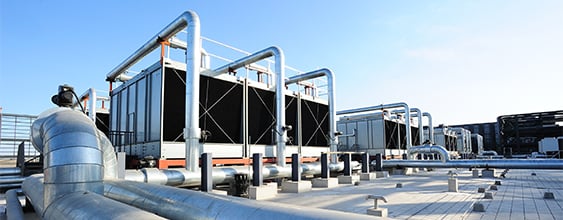Meeting the Paris Agreement
The UK is currently the world’s eighth largest emitter of carbon dioxide. As a key signatory to the Paris Climate Agreement to limit global temperature rise to below 1.5°C and with an ambitious target to reduce carbon emissions by 80% by 2050 (compared to 1990 levels), the UK must now, more than ever, take action.

Business and industry will need to play a key part in this effort as it is estimated they account for around 25% of all UK emissions. To help drive action, the framework for mandatory energy and carbon reporting for businesses operating in the UK is about to go through a momentous change.
From April 2019, Streamlined Energy and Carbon Reporting (SECR) will replace the Carbon Reduction Commitment and extensively expand the scope of the existing Mandatory Carbon Reporting (MCR) regulations -The current framework was deemed too complex and SECR aims to improve and simplify this, whilst encouraging more businesses to act to reduce emissions.
What’s changing?
The new regulations will mean that significantly more businesses will have to now report on their energy usage and subsequent carbon emissions. It is estimated that over 11,000 large companies will be affected by the regulations with many businesses, including large LLPs, now required to disclose their energy and carbon impacts where they previously weren’t – this is a seven-fold increase from the companies that currently report under MCR. The government anticipates these regulations will have wide reaching benefits for the UK, not only for driving action towards a low carbon economy but also, according to their July 2018 consultation response, delivering a potential £1.5 billion of value to society through carbon savings, improvement in air quality and a reduction in noise pollution.
Carbon Five steps for managing SECR
While this new framework may seem challenging to the businesses now affected, we have identified the five steps you should take if you think you may be affected.
- Confirm inclusion in scope
- Confirm inclusion in scope for SECR by determining whether you fit the Companies Act 2006 definition of a ‘large company’ and meet any other criteria defined in the pending SECR guidance
- Carry out a gap analysis of current reporting against the published SECR guidance and agree a project plan:
- Review current data collection and reporting processes
- Review current extent and maturity of reporting
- Review current energy efficiency, if historical data is available
- Data collection
- Manage data collection process with key stakeholders; define expectations
- Collate, process and store data ready for calculation.
- Calculation
- Calculate GHG totals in line with SECR guidance and latest GHG reporting standards
- Maintain records of any assumptions or emission factors used to be recorded alongside the methodology.
- Prepare and submit report
- Prepare report in-line with SECR guidelines.
- Undertake internal (and potentially 3rd party) quality review
- Obtain Executive level sign off
- Publish report or statement
- Agree the actions that are needed to bridge the gap between your current position and compliance with SECR.
Need more information and some practical steps?
As a guide to what could be a daunting process, WSP has developed a simple toolkit for businesses wanting to know how SECR might affect them, providing the practical steps they should be taking to ensure compliance.
If you have more questions about the changes, we’d be more than happy to answer them – please contact James Tapson














